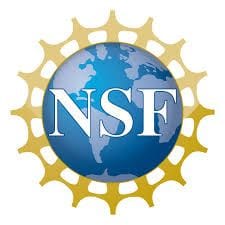by Heather Messina and Kate Bullard, Office of Research and Graduate Studies
In a session hosted by the Research Office, several Lehigh faculty shared best practices for submitting a proposal to the National Science Foundation (NSF). Specifically, the discussion centered on tips for engaging the proposal review audience and highlighting Broader Impacts.
Kate Arrington (Psychology) and Hector Munoz-Avila (CSE), who led the panel discussion, recently returned from Washington DC after a rotation as NSF Program Officers in their respective fields of research. Ed Webb (MEM) and Jim Hwang (ECE) joined the discussion to offer insight as recent awardees.
In addition to following the instructions in the Proposal and Award Policies and Procedures Guide (PAPPG) and the NSF program solicitation here are insights for crafting a competitive proposal.
- Search for New funding opportunity announcements offered by the agency. There tend to be fewer applicants for the first couple cycles of a New funding opportunity.
- Email the program officer assigned before you begin writing the proposal. Ask specific questions such as:
- Does my research topic fit with this funding opportunity announcement? Attach a one-page summary of the main points of your proposed project.
- How will the review process be set up? Will there be an ad hoc review? Depending on how the program officer conducts a review process, you can tailor your project description to appeal to a panel with expertise in your topic, or to a committee that needs context or background information.
- Is it possible for my research topic to fit the goals of more than one directorate? It was mentioned that co-review of a proposal by more than one directorate results in a greater chance to be funded.
- List between 5-7 “Suggested Reviewers” in NSF Fastlane. The program officer actually uses this list, and it makes their job easier to put a review panel together.
- Craft a compelling message for why your project is an important step in moving your field of research forward.
- The program officers spend a lot of time reviewing and editing the program solicitation before it’s released. They use it as their guide for deciding whether proposals meet the criteria, and it would benefit faculty to use it as their guide for writing the proposal.
- The Broader Impacts section of the NSF proposal is important and is closely looked at by both the review panel and the program officer. It was mentioned that this piece should be a focus area of clear and detailed planning/writing.
- Describe in the Budget Justification document what funds you are using to support your plans for the Broader Impacts.
- Email the program officer a couple weeks after a proposal is declined, and request a phone call to discuss the context of why the proposal was declined, and suggested areas of improvement for future proposal submissions.
- Offer to serve on review committees for research topics within your expertise. Any stage investigator is encouraged to email the program officer to let them know what topics you would be interested in reviewing.
